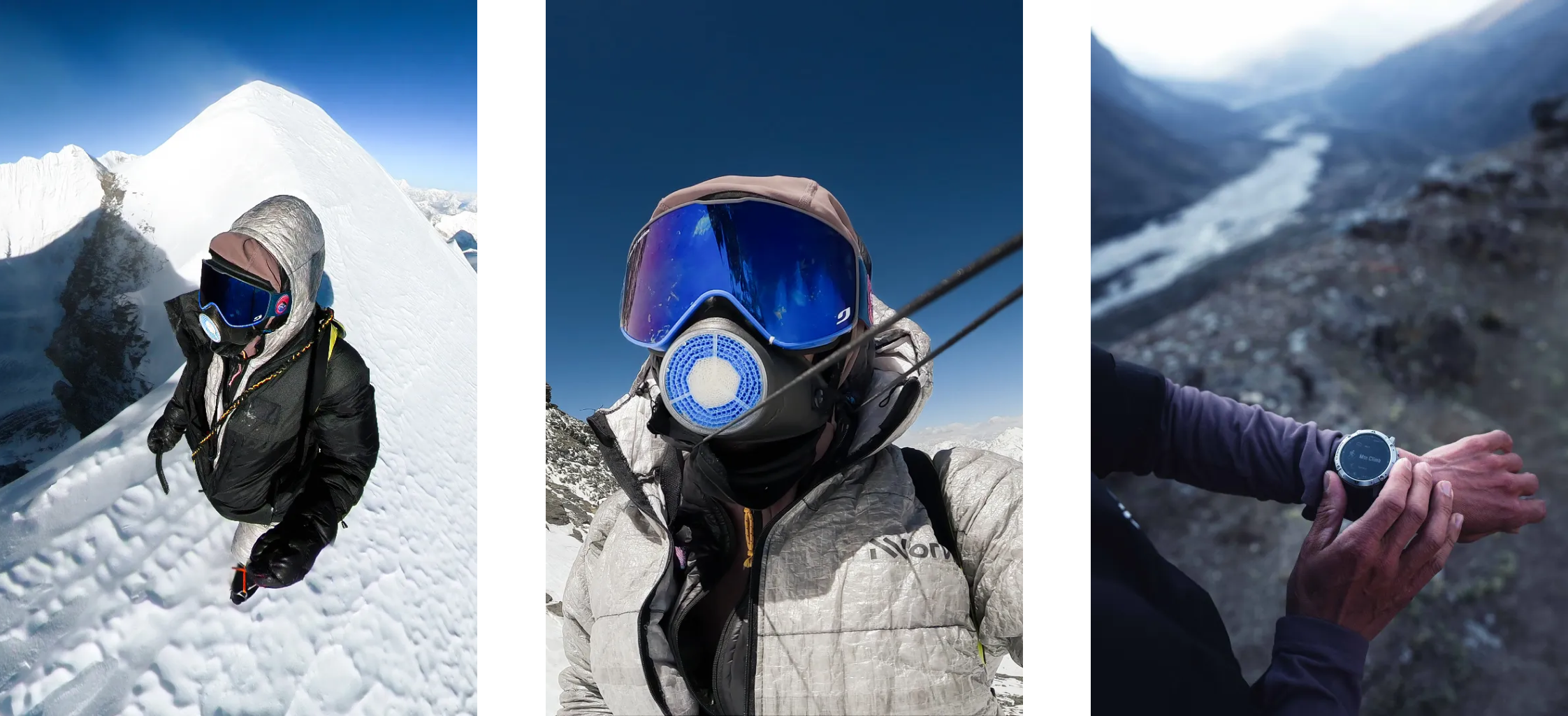Without it (COROS "Back-to-Start" feature) it would have been impossible or very difficult to get back safe. – Kilian Jornet
In 1963, Alpinist Tom Hornbein and Willi Onsoloed set out to climb Mt. Everest via the West Shoulder. Fast forward 60 years, and Kilian Jornet aimed to follow in their footsteps. No stranger to expeditions in the Himalayas, Kilian set out to push his limits and see what was humanly possible. Heading up this route with no oxygen supplementation and no Sherpas to lean on, it was up to Kilian to decide how to move forward and, ultimately, when to retreat to camp as conditions worsened. Below is the story of Kilian's 2023 NNormal Everest expedition and his return to safety once it was clear this attempt was no longer safe.
 Photo by: Julien Raison
Photo by: Julien Raison
Kilian's Route
Kilian's route is displayed above, as captured by his COROS VERTIX 2. Kilian started from Base Camp #2 and proceeded to the west shoulder before tackling Everest's Western face (Hornbein). While the way up was slowed by wind and ensuring proper footing in hazardous conditions, his descent down was sped up through accurate GPS tracking and following his original path up. Peaking out at a height nearly 8000 meters above sea level, it took Kilian 24 hours, 10 minutes, and 2 seconds to reach this point. When the decision was made to retreat safely and utilize his "Back-to-Start" function, he could safely return in 6 hours, 49 minutes, and 41 seconds.
Caught in Avalanche Near 8,000 Meters
Facing wind pockets on the way up the Hornbein, Kilian pushed through a 10cm snow pack, igniting an avalanche. "I broke a wind pocket, not big, maybe 10cm deep, but that carried me for about 50m, then I was doubting if to continue since I was feeling very well and I saw the end of the route or to turn around, I decided the latter because it was still a long part with pockets and would be a bit of a lottery." While many individuals would have been troubled with getting so close to the peak, Kilian knew there would be other days" I think I have the experience not to get too upset about the need to turn around when things like that happen even if I feel good and to realize that is what happens in the mountains."
Snow Drops Visibility to 5 Meters on Decent
As Kilian decided to turn around, the blowing wind created low visibility and covered his previous tracks. With no distant visual cues or steps to follow safely, Kilian turned to his COROS VERTIX 2 "Back-to-Start" for support. "I knew it was there, so I put it on immediately when starting to go down. With that visibility, if not, it would be very difficult to find the route and not end up somewhere in the Rombuk glacier or in a challenging navigation to avoid crevasses." When out in the wilderness, athletes need to be able to rely on their equipment when the going gets tough. When talking about this feature, Kilian noted: "It was the only thing I could trust. I knew it was accurate so I could trust it on a 1-2 meters precision range!"
Technology Provides Instant Boost
Even for the best mountaineers in the world, conditions on Everest are always a matter of life or death. While Kilian is exceptionally skilled, the use of modern-day technology can provide an added boost when it is needed the most. "I would go down much slower, so colder, and needed to use the ice axes to be sure that crevasses and cornices weren't there. And probably needed to go round many times to find the route, try to follow rock features not to turn round…and even like that maybe I could have ended in Rombuk side of the mountain instead of at the south side."
While Kilian would have navigated his way down the mountain, the added boost of technology aided in his return safely to Camp #2, where his team eagerly awaited his arrival. COROS is honored to work with such a skilled athlete in helping him secure top placings at events and, more importantly, ensuring the technology is there when it's needed the most for safety.
COROS GPS Navigation

Photo by Bertrand Delapierre
Whether attempting to climb Everest or exploring a new hike, it's always important to be prepared for what Mother Nature may throw your way. At COROS, we want to help athletes with their performance and their peace of mind in knowing they can get back home safely should conditions arise. As you head out for your next adventure, let COROS guide you as you head out the door and continue to explore perfection!
See below for more information on how to use your "Back-to-Start" feature.
/fit-in/0x9/coros-v2/images/common/logo_black.png)
/fit-in/252x0/coros-web-faq/upload/images/fbf93a9925c827c98ea66c8f0612664e.png)





